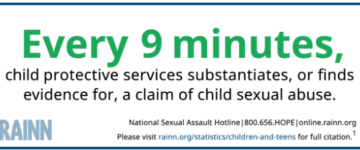Where does the housing justice movement go from here?
From Cea Weaver / July 30 / NYSFocus.com
Eighteen months ago, COVID-19 forced millions of people to reckon with a long-standing crisis of housing insecurity in the United States. Before the pandemic, millions of people could not afford their housing costs: 75% of low income families were paying more than half their income on rent, and just 1 in 4 people who needed public rent relief received it. By the fall of 2020, as many as 43% of the nation’s renters were at risk of eviction.
It was in this context that the demand to “Cancel Rent” rippled across the country. And in New York, the housing movement was well prepared. Less than a year earlier, in June 2019, we had defeated the most powerful lobby in New York State, winning sweeping tenant protections — the strongest in the country — and expanding rent regulations for the first time in decades. In 2020, facing a deadly pandemic and an attendant economic crisis, the campaign to Cancel Rent animated hundreds of protests, rallies, and the largest coordinated rent strike in decades.
But despite this historic mobilization and the horrifying proportions of the crisis, New York State did not “cancel rent.” Instead, the State passed the Emergency Rental Assistance Program (ERAP) — a temporary program to distribute $2.7 billion in federal money to landlords for COVID-19 back-rent. So far, the program has distributed a paltry number of checks, and forces tenants and landlords to spend about two hours to apply — if they’re not blocked by myriad technical glitches.
The challenges associated with ERAP are disappointing but not surprising — they stem from deep structural problems with New York’s long-standing approach to housing subsidies that Cancel Rent sought to address. As ERAP stumbles, eviction moratoria expire across the country, and the threat of mass displacement looms again, it’s worth examining what happened with the campaign to Cancel Rent, and where the tenant movement should go from here.
What Did Cancel Rent Mean?
The phrase “Cancel Rent” is deceptively simple. Over the course of eighteen months, it came to mean different things — strategically and functionally — to different sectors of the housing movement. At various points in the year, at least three “Cancel Rent” bills were active in the state legislature. The bill supported by the Housing Justice for All coalition, introduced by Senator Julia Salazar and Assemblymember Yuh-Line Niou, would have universally cleared COVID-19 rent debt, automatically removing the stress of arrears for hundreds of thousands of tenants. Property owners, not tenants, would have to apply for aid; their eligibility would be determined by the rental income they received during the pandemic and the overall health of their portfolio. Mom-and-pop landlords who were truly suffering would have back rent cleared and could even earn a modest return on investment; private equity giants like Blackstone, who accrued billions in returns during the pandemic period, would be forced to forego collection on rent. In exchange for support, landlords would be required to regulate rents and comply with eviction protections.
In winter 2021, statewide actions called for the cancelation of rent | Housing Justice for All
Some proponents and detractors alike saw “Cancel Rent” as merely a messaging strategy to capture the public imagination and motivate tenants to take action. Others understood it as a strategy to demand the impossible and, in doing so, to increase the chances of winning a straightforward budgetary demand for the state to spend billions of dollars to pay accumulated back rent. For Housing Justice for All, it was not an impossible demand, but a call — taken up in legislation at both the federal and state levels — for a fundamental reorientation of housing subsidy programs towards a framework in which the state’s role is not primarily to guarantee landlords’ revenue streams, but to keep people in their homes.
The Cancel Rent movement’s effectiveness should be evaluated along all three of these lines: as a messaging strategy, as a strategy to win more funding for rental assistance, and as a strategy to transform the relationship between housing and public finance in New York.
As a messaging strategy, Cancel Rent had mixed results. It was popular among the general public, especially those newly awakened to the country’s rental crisis. And it achieved what digital organizers dream of: it went viral, organically. The number of people engaging with Housing Justice for All’s social media platform exploded, allowing us to communicate with hundreds of thousands of new people.
But Cancel Rent was also polarizing: it activated our opposition and served to erode pro-tenant coalitions inside the state legislature, where it was viewed with either skepticism or outright disdain. Skeptics believed that the program was expensive and unrealistic, while detractors viewed it as benefiting the unworthy. For months, the real estate industry spun narratives about “bad-actor” tenants who were “undeserving” of the support Cancel Rent would provide them. These narratives — based in racist “Welfare Queen” tropes, a liberal tendency against universal social programs, and the long-standing valorization of property-owners in our society — gained immense traction in the State legislature. They were powerful enough to obscure actual data: that mom-and-pop landlords are few and far between, and that renters are far less likely to have the savings necessary to weather sudden loss of income than property owners. They were also powerful enough to divide the coalition of socialists, progressives, and moderates who shepherded through the Housing Stability and Tenant Protection Act of 2019, exposing factions within a Democratic supermajority in Albany and the limits of elected officials’ willingness to fight for radical change.
As a strategy to win expanded rental assistance, the Cancel Rent movement was successful, both at the state and national levels. Senate Majority Leader Chuck Schumer’s proximity to the New York housing movement played a role in his work to deliver billions of rental assistance to states and cities across the country. And key components of the “Cancel Rent” legislation — support for undocumented New Yorkers and protections against rent hikes and evictions — were included in legislation that became ERAP.
But while we have grown our movement and taken clear steps to soften the blow of the COVID-19 back-rent crisis, the campaign to Cancel Rent has not yet delivered a path out of New York’s dysfunctional approach to housing subsidies.
Our current housing programs are characterized by a byzantine bureaucracy that creates barriers for the poor — and especially for those hardest to reach and most marginalized, like undocumented New Yorkers and those who work in the informal economy. Barnard economics professor Elizabeth Ananat put it well: “Our systems are built around these middle-class models where everybody has documentation for everything. Much of the world doesn’t work that way, but most of the people who write laws live in the world that works that way.”
Under our current system, tenants unable to afford rent have few options. They can apply for public housing, but the wait lists are extraordinarily long — over 160,000 people for an agency that manages just 179,000 apartments. If they live in New York City, they can join the housing lottery and hope against all odds — 650:1 for a family of three that earns under around $30,000 — that they will win placement in a subsidized unit.
Or they can seek rental assistance, in the form of “vouchers” that pay the difference between 30% of their income and their rent. There is a shortage of over 600,000 vouchers in New York State; as a result, eligibility requirements are narrow and even those who manage to secure a voucher face barriers to using it. “Cancel Rent” legislation sought to turn this system on its head: it would have eliminated bureaucratic barriers to aid amongst the poor, prevented further consolidation of the real estate market by private equity, expanded the scope of our affordable housing subsidy programs, and ensured that rental assistance — ultimately a subsidy for landlords — goes to those who need it most.
Where We Go From Here
For all of Cancel Rent’s challenges, its call to solve the housing crisis by reorienting the housing market has only become more necessary.
The COVID-19 housing crisis is far from over, but pandemic-era safety net programs, including eviction moratoria and rental assistance, will soon lapse. Without further action from the state or federal government, we will face mass evictions beginning on September 1st, as millions remain unable to pay rent. Smaller landlords, unable to maintain their buildings, will exit the housing market, leading to a further consolidation of the real estate industry by finance capital.
As the state’s budget was being negotiated in April, protestors gathered outside the Executive Mansion in Albany | Housing Justice for All
It’s inevitable that the housing market will restructure in the face of this crisis — and what that will look like is currently up for grabs. Policy makers and housing organizers should learn from the failures and successes of the last eighteen months as we navigate a path forward. And in order to win lasting changes that do more than tinker at the edges during an emergency, we have to pursue bold demands that can bring more people into the organized housing movement, erode the power of the real estate industry, and build a coalition inside the legislature.
As we recover from the COVID-19 crisis, the State should take action towards permanent, easy-to-use rental assistance and pass the Housing Access Voucher Program (HAVP). HAVP is a proposed rental subsidy explicitly designed to address the shortcomings of the State’s existing programs — including ERAP. Existing programs, with narrow income eligibility and excessive documentation requirements, create a retributive relationship between recipients and the government. HAVP, on the other hand, is designed to expand the constituencies of people eligible for housing assistance (especially undocumented New Yorkers) and, if fully funded and implemented with a low-to-no barrier to entry, could vastly expand the number of people who have positive rather than punitive relationships with government assistance. This, in turn, would expand the constituencies of people personally invested in joining housing organizations and fighting for deep public funding to address the housing crisis.
HAVP is not a silver bullet, and in order to effectively address the root causes of the housing crisis, it must be paired with programs that limit rent increases and address power imbalances between tenants and landlords — like good cause eviction and giving tenants the opportunity to purchase the buildings they now rent in. The State should also eliminate expensive subsidies to corporate landlords like 421-a and 485-a. If some landlords exit the market, the state can use an expanded capital budget, no longer drained by ineffective and costly corporate tax breaks, to acquire distressed properties and convert them into social housing.
A campaign for these four interventions could build a powerful coalition within the state legislature, addressing the shortcomings of the campaign to Cancel Rent. Collectively, the interventions would play a key role in addressing short-term housing insecurity, while also expanding tenant power and social housing — key priorities of the Cancel Rent movement. By providing both money to pay the rent and protections against retaliatory rent hikes and evictions, it would build the political power of tenants to organize for control over their homes, while building public support for the role that the government can play in addressing the housing crisis. It would represent a deep commitment to permanent and abundant operating subsidies, and bring more housing into the State’s regulatory systems. And by cutting tax subsidies to corporate developers to build market rate housing, it would expand our capacity to build true social housing — and help establish that the State is not in the business of creating limitless profit for the real estate industry.
Over the last 18 months, tens of thousands of people have heard the call to “Cancel Rent” and joined New York’s housing movement — and, as the saying goes, you can’t unring a bell. Our work is cut out for us: to respond to housing instability not with band-aids that prop up the status quo but with policies that bring us closer to a fundamentally different housing system, and to work alongside politicians and policymakers to enact that vision. As Governor Cuomo and state legislators seek re-election in the coming months, we will be ready. 







